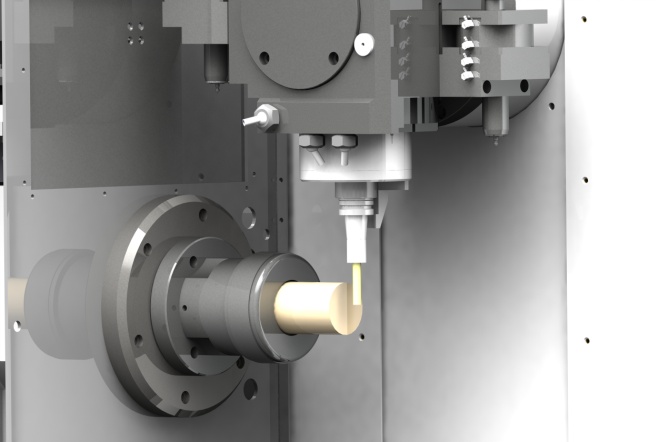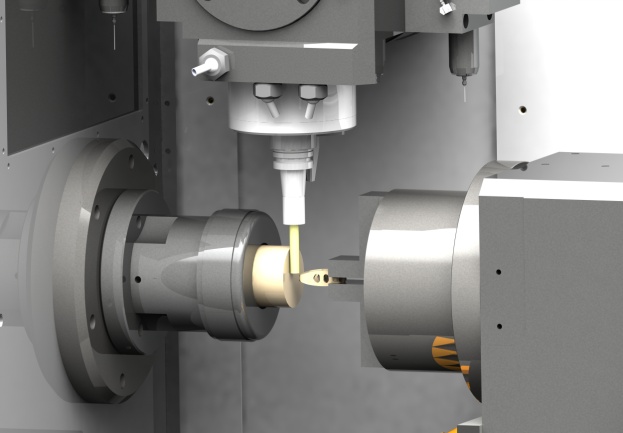You are here
Case #1: PEEK PROCESS, manufacturing line of spinal implants
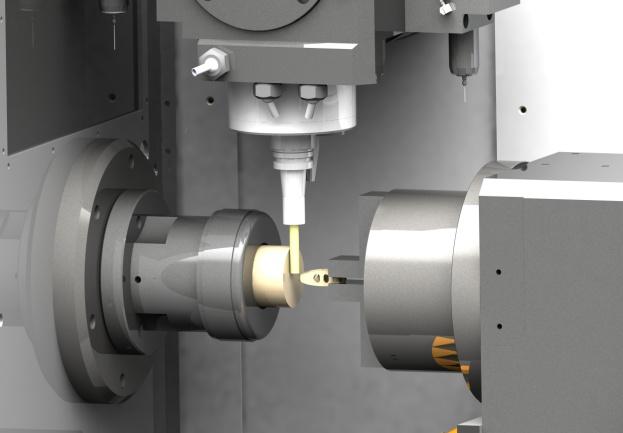
REALMECA has been selected to organise and assemble an automated cell composed of several REALMECA machines. The goal is to automatise the production of a set of spinal implants in PEEK material.
Process(es) realised :
- Dual-spindle turning
- Milling
- 7-axis machining
- Bar feeding
- Automatisation
- Programming
- Dry machining
- Palettisation
Machine(s) used :
-
RM-3 7
- CN SIEMENS 840 D
- Axis X : 580mm, Y : 140mm, Z : 285mm
- 60 positions - HSK E 25 tool changer
- Ø 42 mm bar capacity
- 48 000 rpm milling spindle with B axis
- 6 000 rpm main turning spindle with C1
- 6 000 rpm secondary spindle with X2 and C2 axis
- Systems for distribution and installation of markers
- Palettised system with 16 stations
- Part catcher
- Geometrical controls
- Cell integration
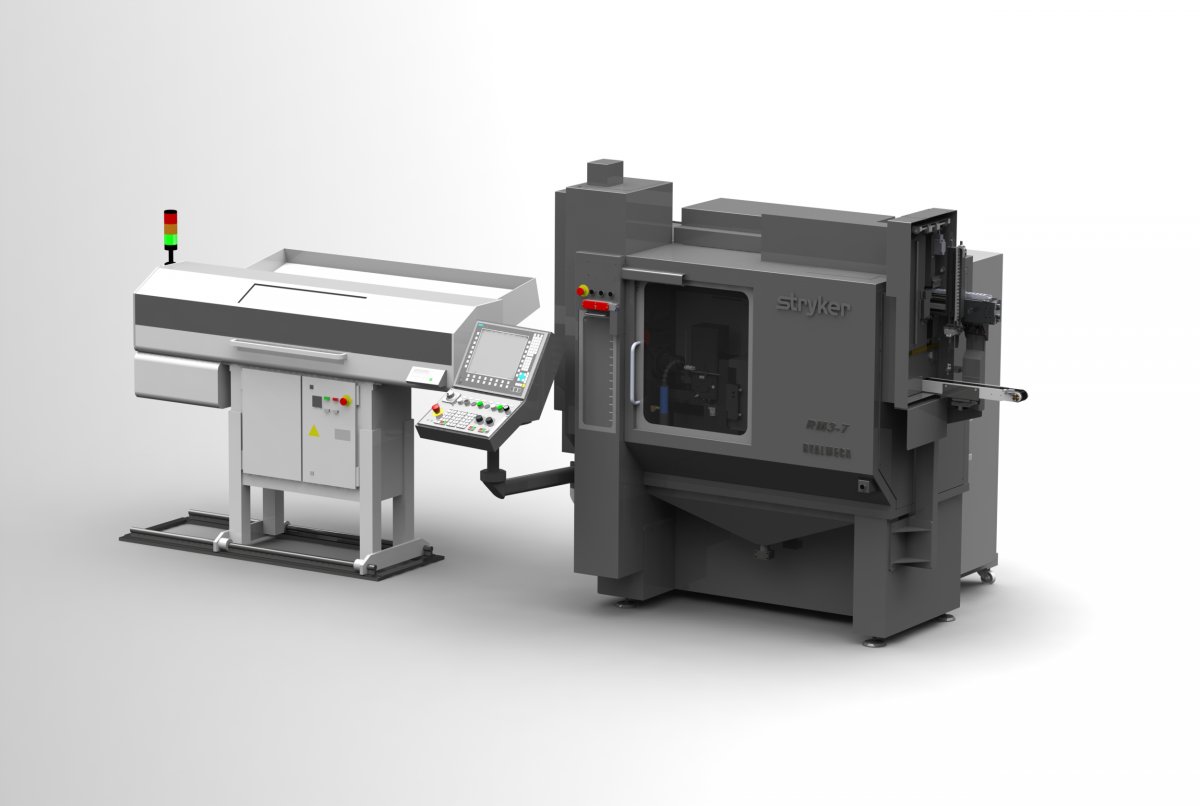
The main goal was being able to provide a machine that could realize all the differents machining steps, meaning : turning, milling, installing the markers, and finishing operations without any human interactions.
Our RM-3 7 were tuned to this project and equiped with this :
- a barfeeder for mass production,
- a 60 stations tool-changer,
- a magazine for the markers that are installed during the process,
- a part catcher that will extract the finished parts out of the machine.
REALMECA was also in charge of preparing the machining programs for all of the implants.
The different parts of the RM-3 7
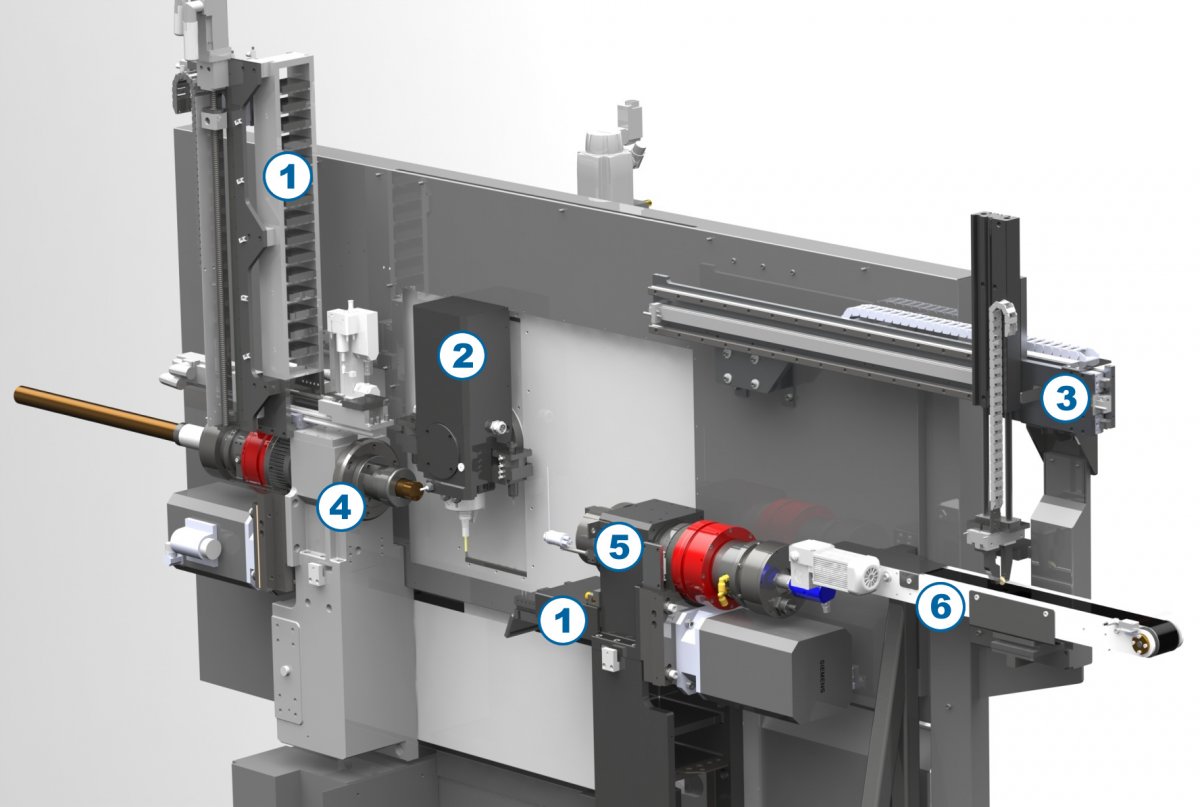
- Markers storages
- Milling spindle
- Manipulating arm
- Main turning spindle
- Secondary turning spindle
- Conveyor belt for extraction
Machining
Working from the bar to the finished parts without interruptions :
|
Turning and milling |
Synchronisation |
Turning and milling |
|
|
|
|
The parts made
This project was made for 7 different products. This implants are made out of PEEK material, worked from the bar, from 16,5 to 42mm of diameter.
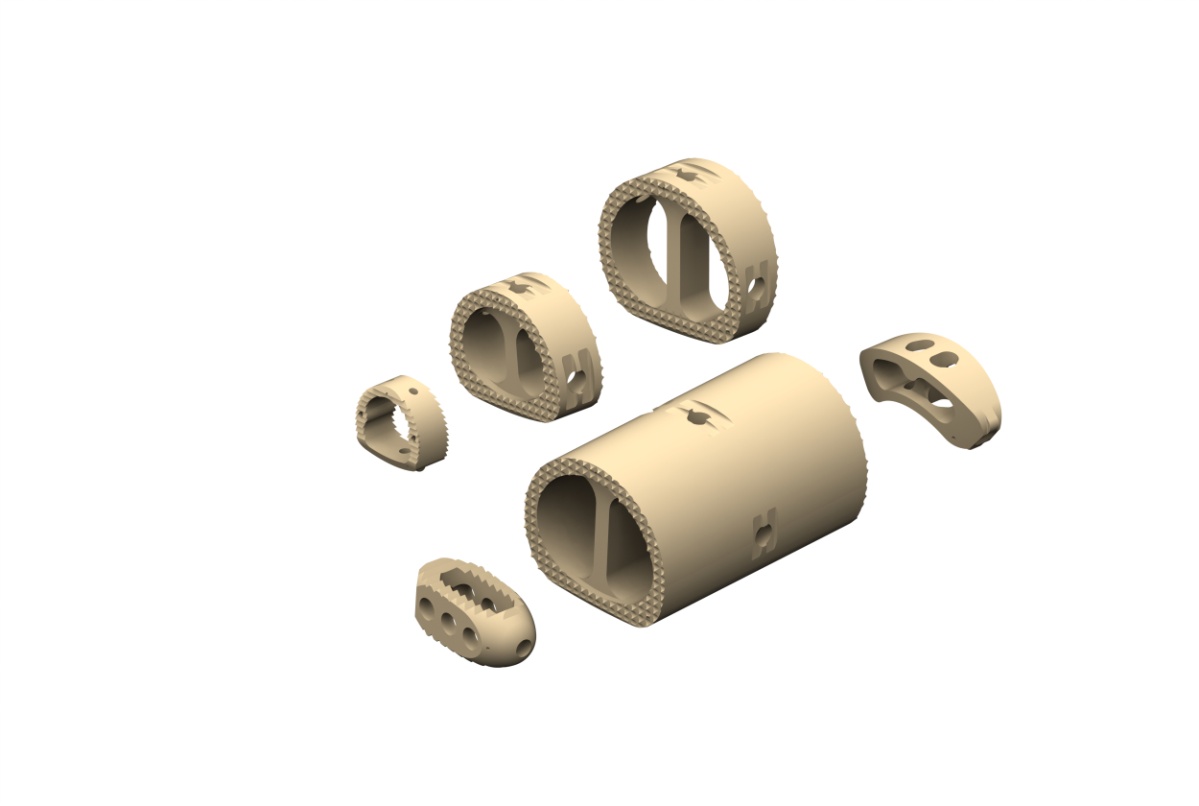
The markers
Since PEEK cannot be seen with X-rays, metal markers with a diameter of 0,6mm and different lengths were added. They will help the radiologist in localizing the implants inside the body of the patient.
This operation was added to the machining process thanks to a paletised and gripping system that stores the different markers and installs them once the part has been drilled.
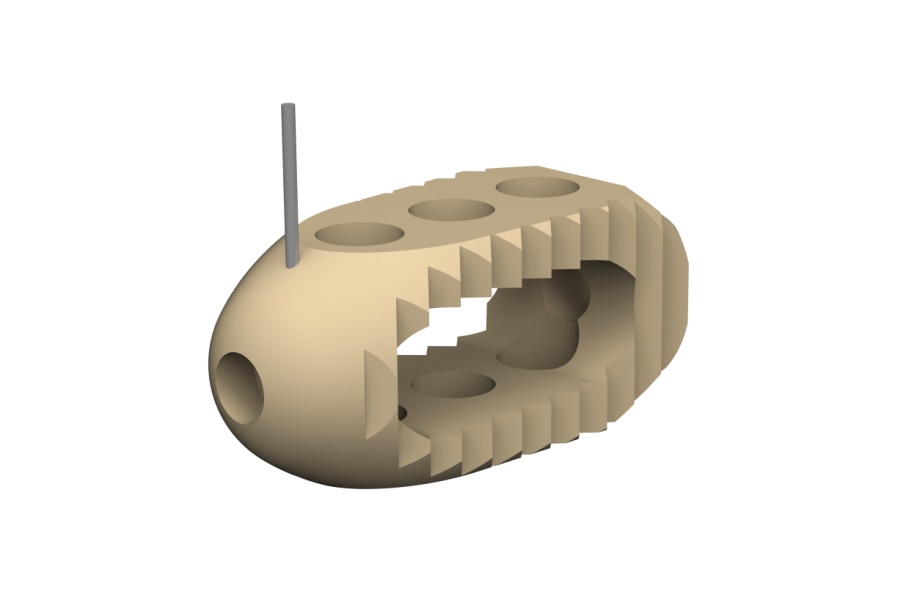
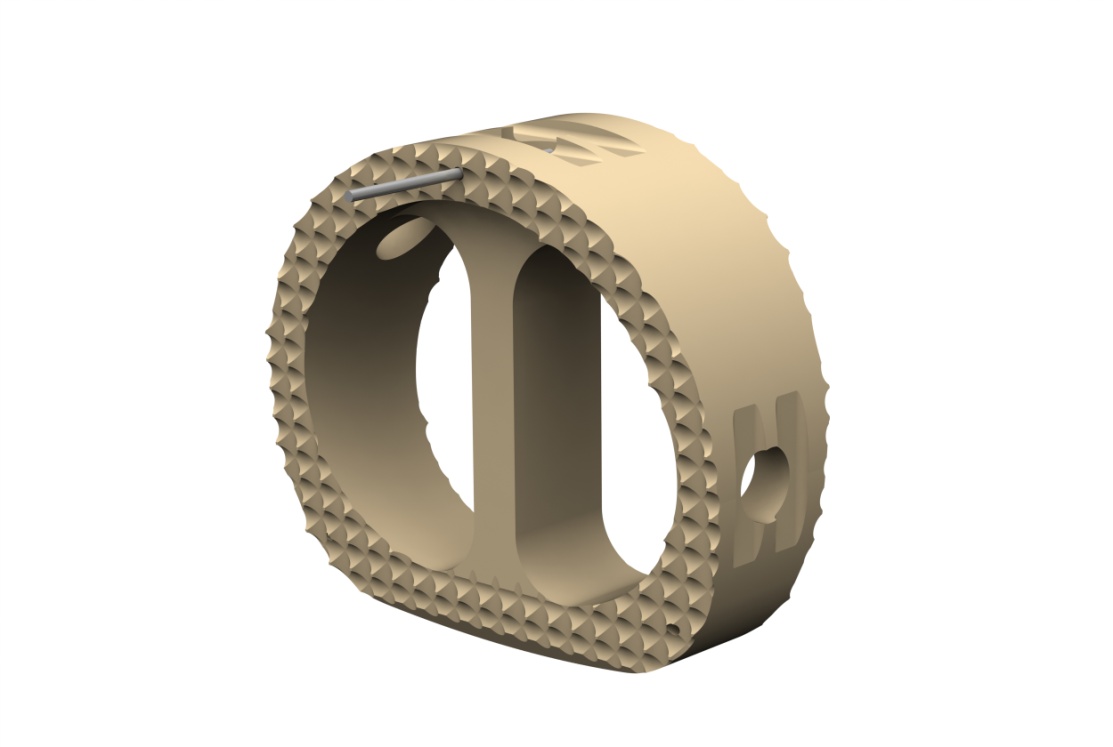
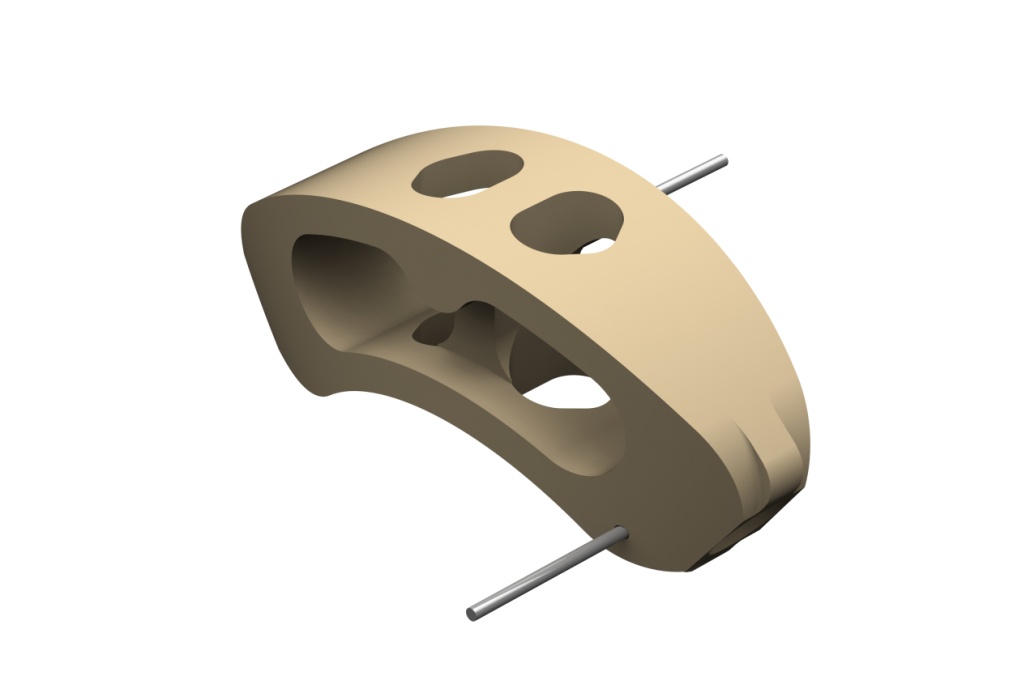
Depending on the part, the installation of the markers can happen on :
- The main spindle :
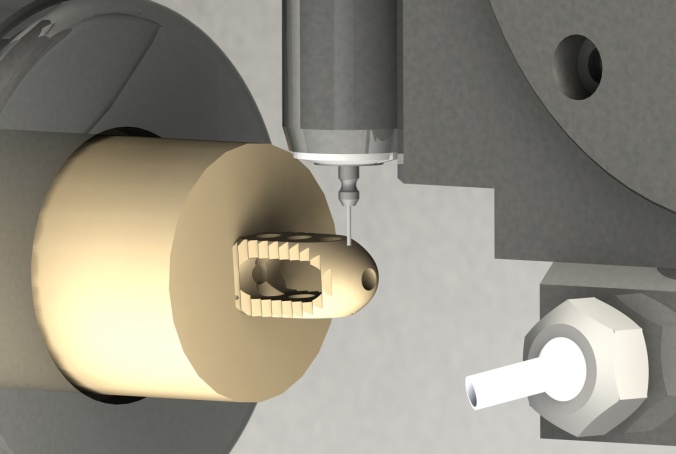
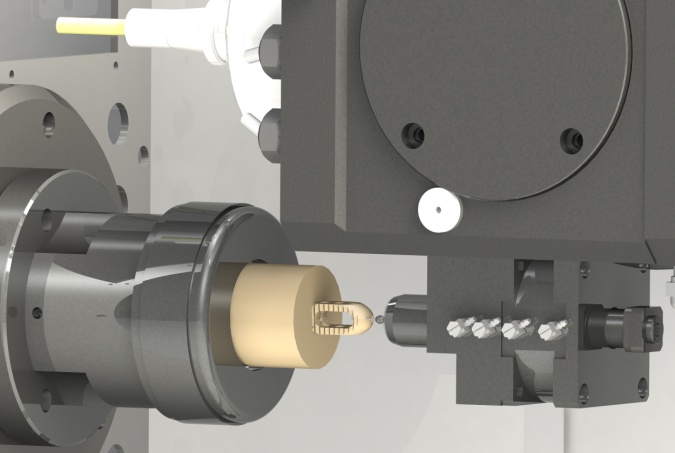
- The secondary spindle :
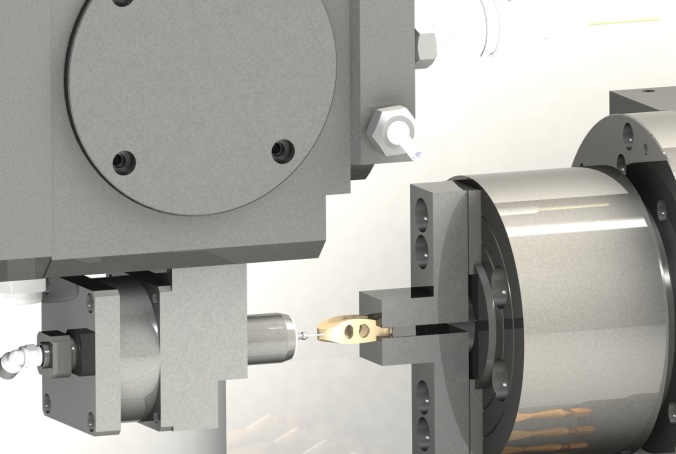
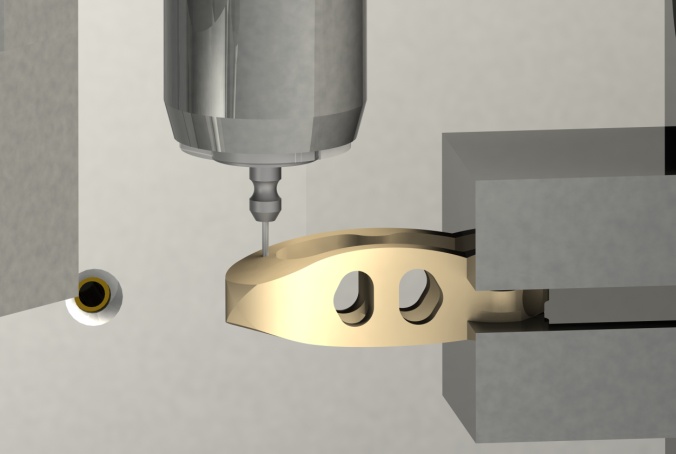
The design of these RM3-7 allows the installation of the markers on any parts and in any positions :
- A palletised magazine next to the main spindle
- Two gripping parts located on each side of the milling spindle
- Two pallets installed in a drawer next to the secondary spindle
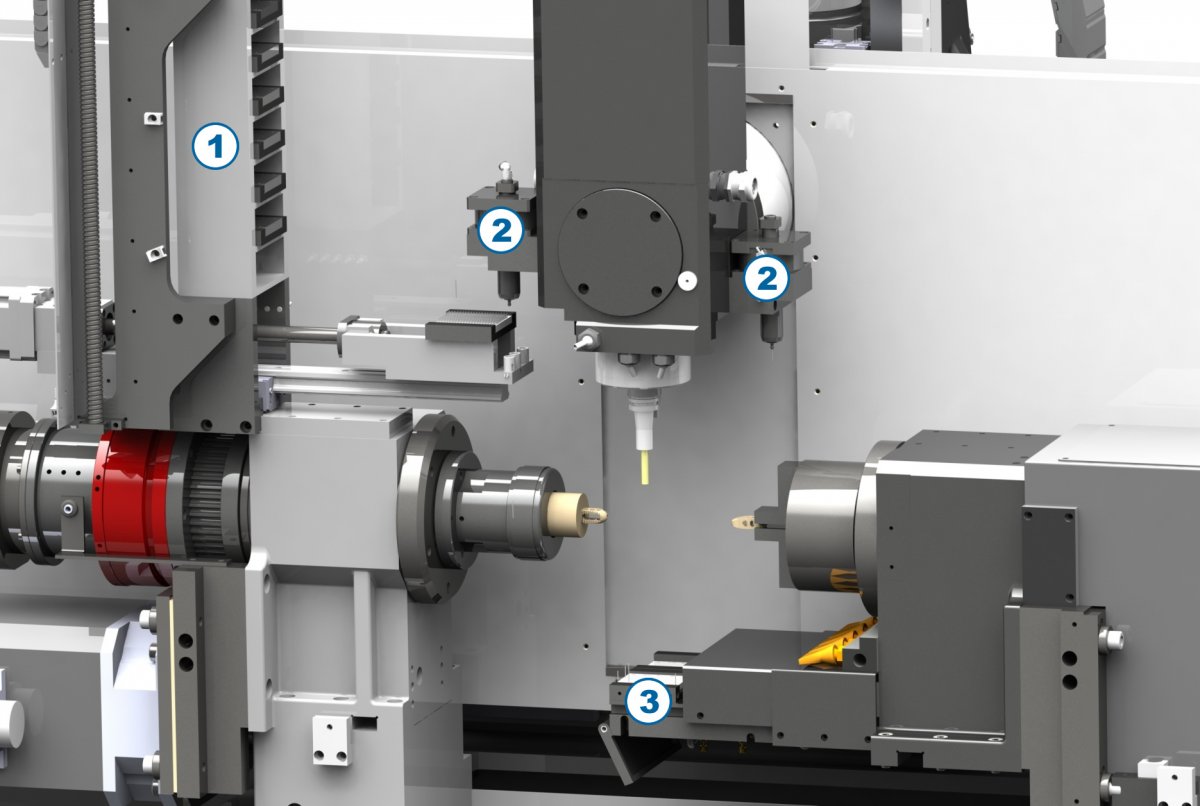
Two gripping parts are located on each side of the milling spindle. They are able to grab the markers from the magazine and install them inside the part.

The markers are sorted by size in specific storages.
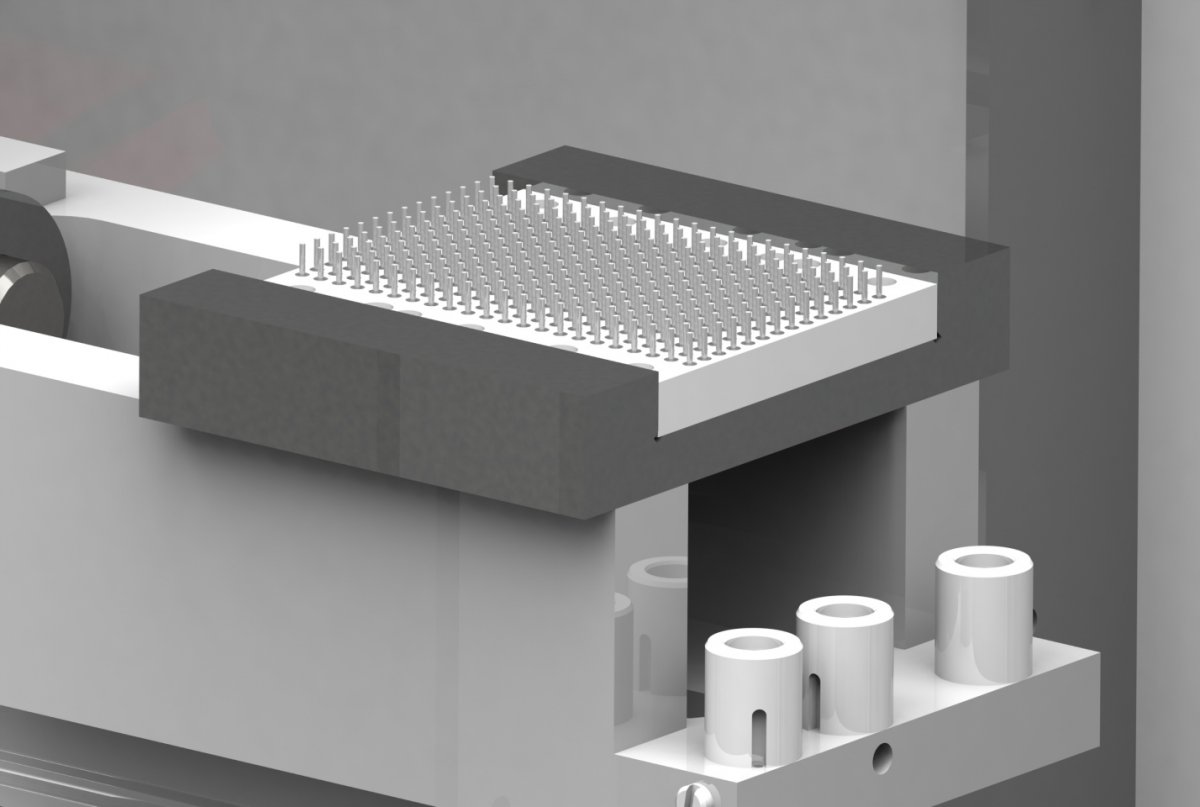
The storages and their supports are themselves stored in a storage tower, next to the main spindle, or inside a drawer, next to the secondary spindle.
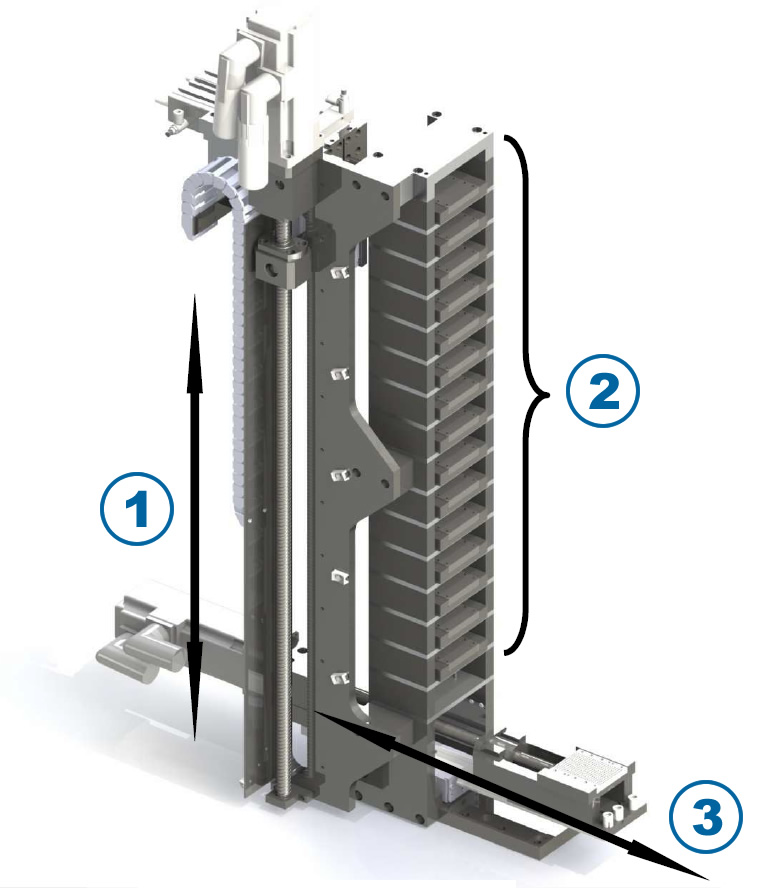
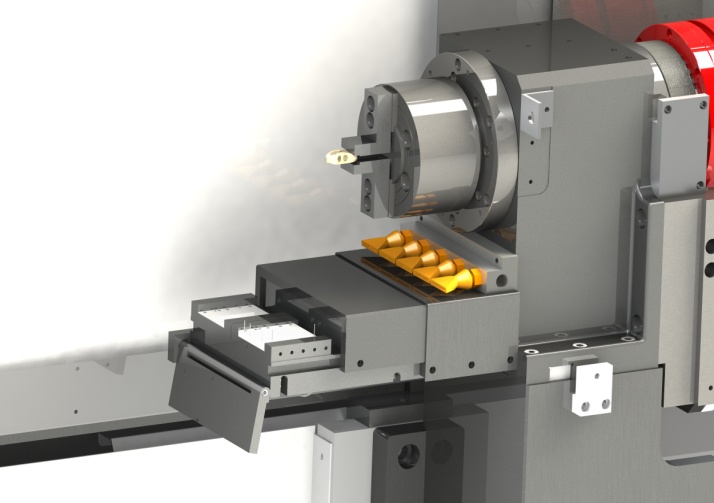
- Elevator
- 16-stations paletisser
- Shuttle
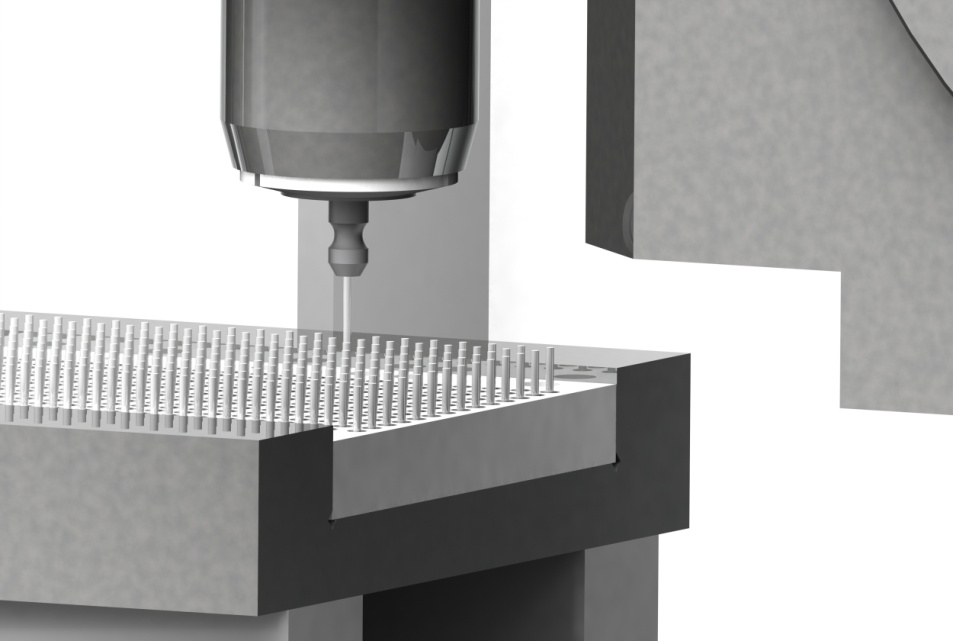
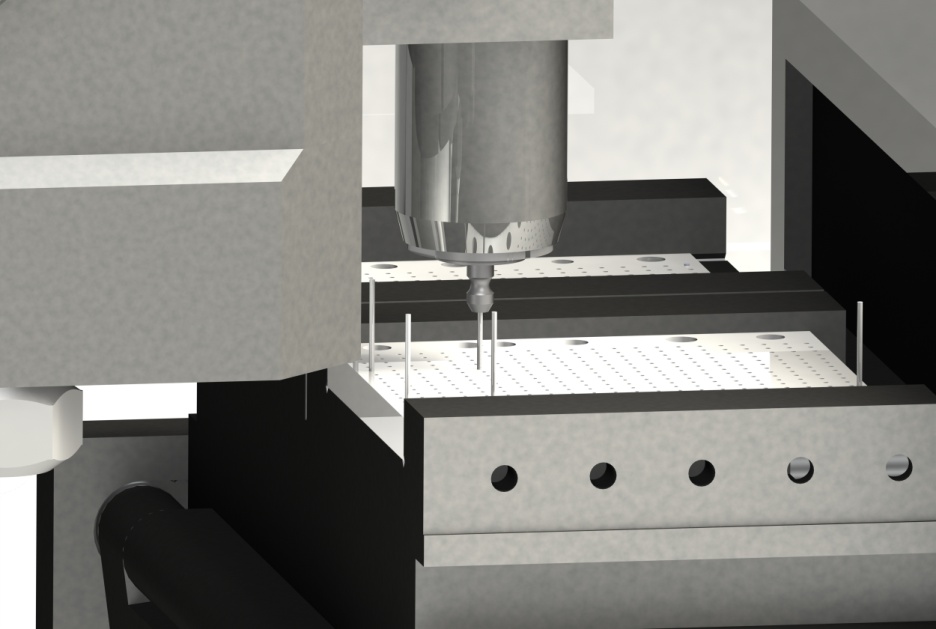
Once the machining process is done and the markers in place, the implant is grabbed and transported to a conveyor belt, leading outside of the work area.
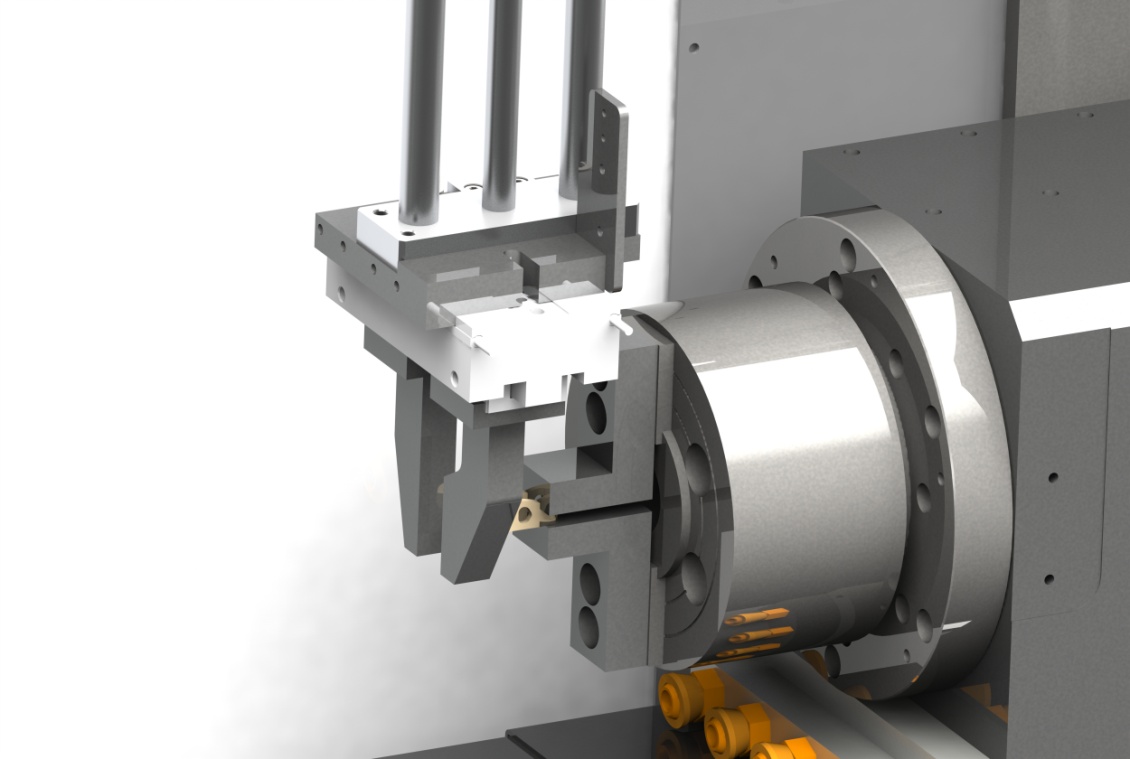
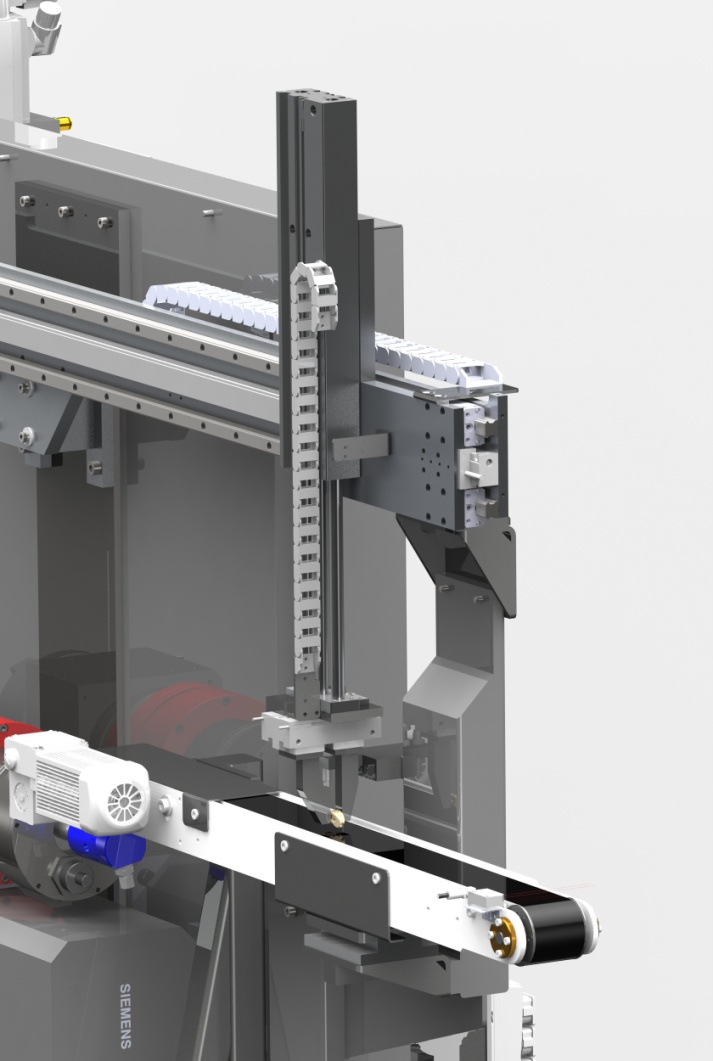
Conclusion
One of REALMECA speciality is being able to adapt a standard machine to a specific need. Here, starting from one of our modular machines, we designed a tailored marker-implantation system that allows the machine to combine all the different machining steps into a single process.

